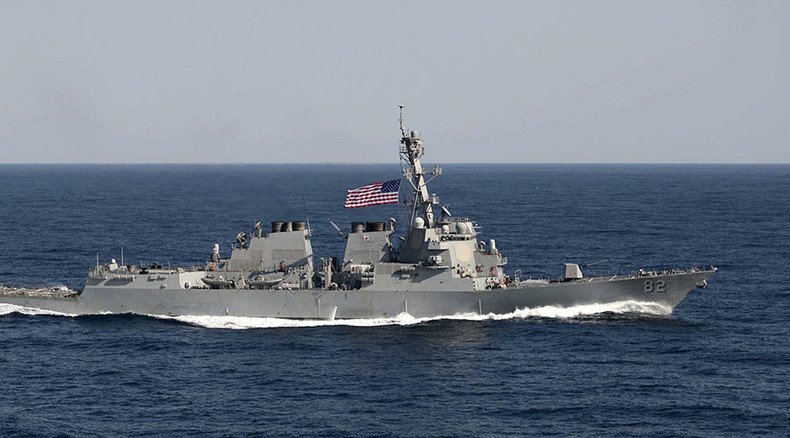US plans to send destroyer to China’s artificial islands – reports

The US Navy is planning to send one of its destroyers on a patrol route that goes within 12 sea miles of artificial islands created by China in the South China Sea. The ship will reportedly leave in the next 24 hours to dispute Chinese territorial claims.
The USS Lassen destroyer will pass by the Subi and Mischief reefs, which belong to the Spratly archipelago, over which China claims sovereignty, reported Reuters, citing US officials. Both reefs were initially submerged before China began an ambitious dredging project aimed at turning them into islands.
The US vessel could be accompanied by one or two US Navy surveillance planes which already repeatedly conducted reconnaissance flights in the area, an unnamed US official told the agency.
Japan shows off naval power, US extends home fleet’s operation to entire Pacific http://t.co/ju1LJpyDnwpic.twitter.com/w1BFlmFHcR
— RT (@RT_com) October 19, 2015According to the US Navy, additional patrols could follow in the coming weeks. The US has already sent its vessels on similar patrols that went near parts of the Spratly reefs previously built up by Vietnam and the Philippines, Reuters added citing the US Defense Department.
The United States should "refrain from saying or doing anything provocative and act responsibly in maintaining regional peace and stability," said the Chinese Embassy in Washington
"Freedom of navigation and overflight should not be used as excuse to flex muscle and undermine other countries' sovereignty and security," the embassy spokesman said of the US plan.
The reported patrol will take place weeks ahead of several Asia-Pacific summits that are scheduled for the second half of November. Both US president Barack Obama and Chinese president Xi Jinping are expected to attend them. Under such circumstances, the patrol carries with it a risk of aggravating tensions between the two countries.
China is building several artificial islands in the disputed territory, which are to play host to radar stations, airstrips and other facilities. Critics insist they are to serve military purposes. China says the military aspect of its reclamation program is minimal and that the islands’ purpose is mostly civilian.

At the same time, China believes the islands to be its sovereign territory and also considers the 12 mile zone around the islands its territorial waters. Beijing would "never allow any country to violate China's territorial waters and airspace in the Spratly Islands, in the name of protecting freedom of navigation and overflight,” country’s foreign ministry stated in early October.
US, China brace for stand-off over disputed islands sail-by as Aussies fence-sit http://t.co/pl5vAAlwedpic.twitter.com/ggLOy0dwKn
— RT (@RT_com) October 15, 2015The US disputes China’s claims and argues that, under international law, building artificial islands does not allow a country to lay claims to sovereignty. Additionally, the US and some of its allies believe that the country’s actions could affect sea trade in the region.
“Nearly three quarters of our trade moves through that South China Sea, so I think it’s quite legitimate for us to have a view on the need to make sure that we’ve got passage,” Australian Foreign Minister Julie Bishop said two weeks ago.
Pentagon complains of 'unsafe maneuver' by Chinese jet shadowing US spy plane http://t.co/S0dGCIQQ0npic.twitter.com/iBGbvNyhDm
— RT (@RT_com) September 24, 2015The US is planning to challenge China’s territorial claims in the South China Sea.
“Make no mistake, the United States will fly, sail and operate wherever international law allows, as we do around the world, and the South China Sea will not be an exception,” US Defense Secretary Ash Carter told a news conference on October 13, after a two-day meeting between senior American and Australian officials.
In response to the US plans, Beijing warned Washington off violating the country’s “adjacent waters and the skies over those expanding islands” by threatening to use military force “if the US encroaches on China’s core interests.”
LISTEN MORE:












